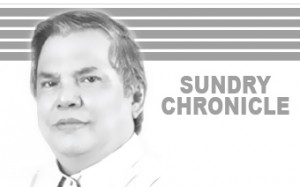The rich and the poor have always existed since time immemorial. Our Lord Jesus Christ said, “The poor will always be with you even unto the end of the world.â€
However, we always hear the analogy that “The poor is at the bottom of the pyramidâ€. It is as if we are blaming the poor for being poor and the rich for being rich.
We always hear the complaint that in the Philippines, only 10% of the population is rich and the others are middle class or poor. However, in the United States of America only one percent (1%) is rich and yet we envy the Americans.
Geometrical Shape
A pyramid (Bis: undók) is a geometrical shape in which the base (Bis: padúlos) is a square (lado) and the side-surfaces (hitad) are triangles (gitlo). A pyramid has a broad base ending at the top as a point (tuldók).
If you cut the top portion of a pyramid it will become a frustum (gangawón). If the top surface is flat or level, it is possible to invert the frustum with the small portion below and the wide portion on top.
Tower of Babel Collapse
When we are told the Biblical story of the collapse of the Tower of Babel in Babylon, we always associate it with the confounding of the languages. We are not told why the tower collapsed.
In Babylon there are no hard rocks available. They made bricks for use in construction. The hardest brick is weaker than ordinary concrete.
When you pile the bricks so high (the objective was to reach the clouds), the poor materials or bricks could not carry the load and it will crumble and the whole tower collapsed.
If we apply it to the analogy that the poor is at the bottom of the pyramidâ€, it means that the poor could not carry or support the middle class and the rich and everything will collapse.
Pyramids of Egypt
In Egypt the pyramids still exist because it is built using granite stones. The rich granite stones were quarried a hundred kilometers away and carried to the site of the pyramid. The stones used were stronger than ordinary concrete.
When the strong or rich stones were piled on top each other they were able to support a great height.
If we apply it to our analogy it means that if the rich and powerful are at the bottom of the pyramid, the rich can carry or support the poor and the middle class.
Function
If you will give equal amounts of money to every member of a group and let them gamble, eventually there will be a winner who will become rich and the losers become poor. It is a fact of life that only few will become rich and many will become poor.
However, life is also a symbiosis. The rich needs the poor and the poor needs the rich. The rich, in order to continue to be rich, must somehow hire the poor to work for him. In like manner the poor must work for the rich in order to earn a living.
Inverted Frustum
To most people, the ideal will be few poor and more middle class and rich people. However, in their analogy the poor is still at the bottom. It this situation the poor could no longer carry the middle class and rich people above the like the Tower of Babel, the whole structure will collapse.
The best situation will be to invert the frustum. The few rich will be at the bottom, followed by the middle class, and the wide poor people will be at the top. Since the rich are strong and powerful they can still carry the load above.
The inverted frustum can be seen in old buildings located at the top of a column and supporting the top beam and floor. Incidentally this structure is also called “capitalâ€.
If you desire to increase the rich people that are at the bottom, it will expand sidewise and the more it can carry the load above.
Comment
It is not good to eliminate the rich. They are the ones who know how to create business and provide employment.
The ideal is let the few who are rich support the many who are middle class and or poor. In Thailand it was tried by Prime Minister Thaksin. He established tertiary hospitals in all provinces in which every patient will pay only about P40 for whatever kind of sickness.
To support the hospitals, the rich corporations and individuals in the province were required to pay for the medicines, equipment, etc. as part of their taxes in order to make the hospitals operational.
Prime Minister Thaksin became popular with the masses but unpopular with the rich. In the power struggle with the rich, Prime Minister Thaksin lost and he was deposed from office in a Coupe d’ tat. Can we try something similar in the Philippines? (By Jes B. Tirol)

